Welcome to gochengdu.cn!
You need to accept our privacy and cookie policy to continue to browse our website. You can change your cookie settings through your browser.

Chengdu, one of the first famous historical and cultural cities in China, has a civilisation lasting 4,500 years. The city has stood on this land without relocation for 3,200 years and its name has been used for 2,300 years, which is unparalleled in China.
Chengdu has been approved as a candidate for the 2023 Culture City of East Asia, the Ministry of Culture and Tourism of the People’s Republic of China announced in August 2021.
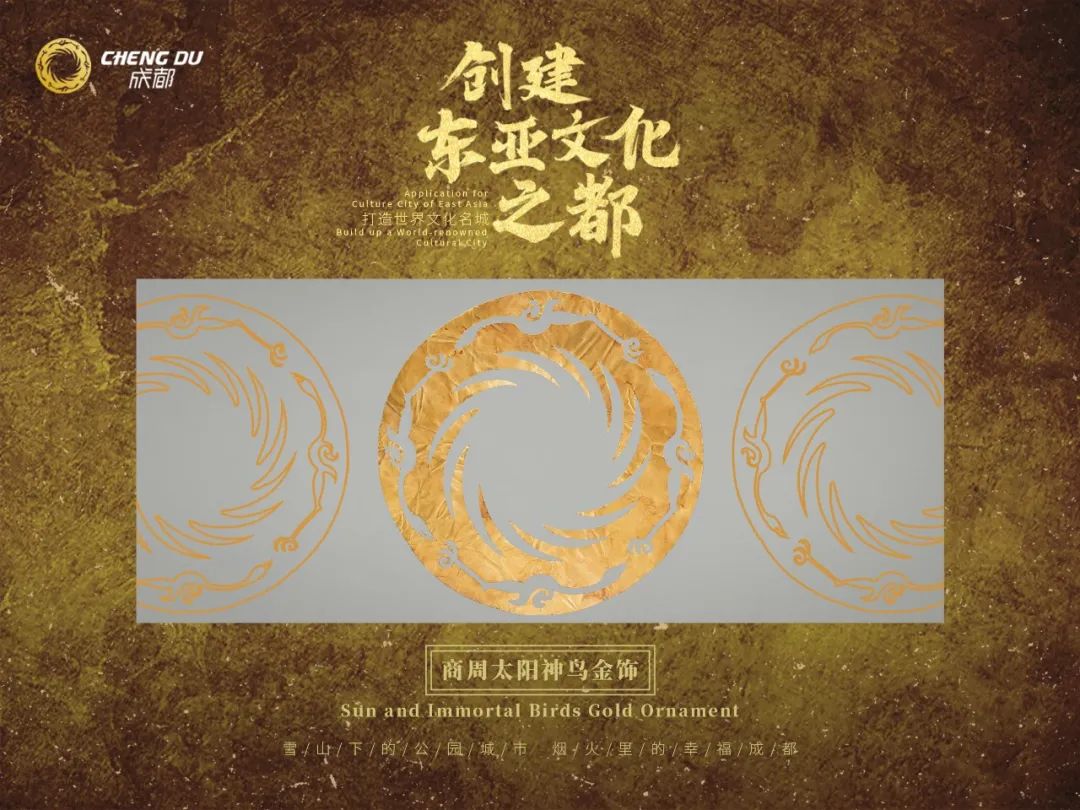
What is the Culture City of East Asia?
The Culture City of East Asia, responding to the initiative of promoting exchanges and mutual learning between Asian civilisations put forward by general secretary of the CPC Central Committee Xi Jinping at the Conference on Dialogue of Asian Civilisations, refers to a cultural program jointly launched and carried out by three East Asian countries, namely China, Japan and the Republic of Korea (ROK), and it is the first international project named after culture in Asia. This program will help Chengdu, one of the first historical and cultural cities and one of the top 10 ancient capitals in China, strengthen its international cultural exchange and cooperation, and deepen understanding of and friendship with neighbouring countries.
Recently, visitors to museums such as the Chengdu Wuhou Shrine Museum, the Jinsha Site Museum and the Chengdu Du Fu Thatched Cottage Museum as well as the Chengdu Public Library may find information about the Culture City of East Asia everywhere. Let's walk into the buildings, and see what surprises the program will bring to the city.
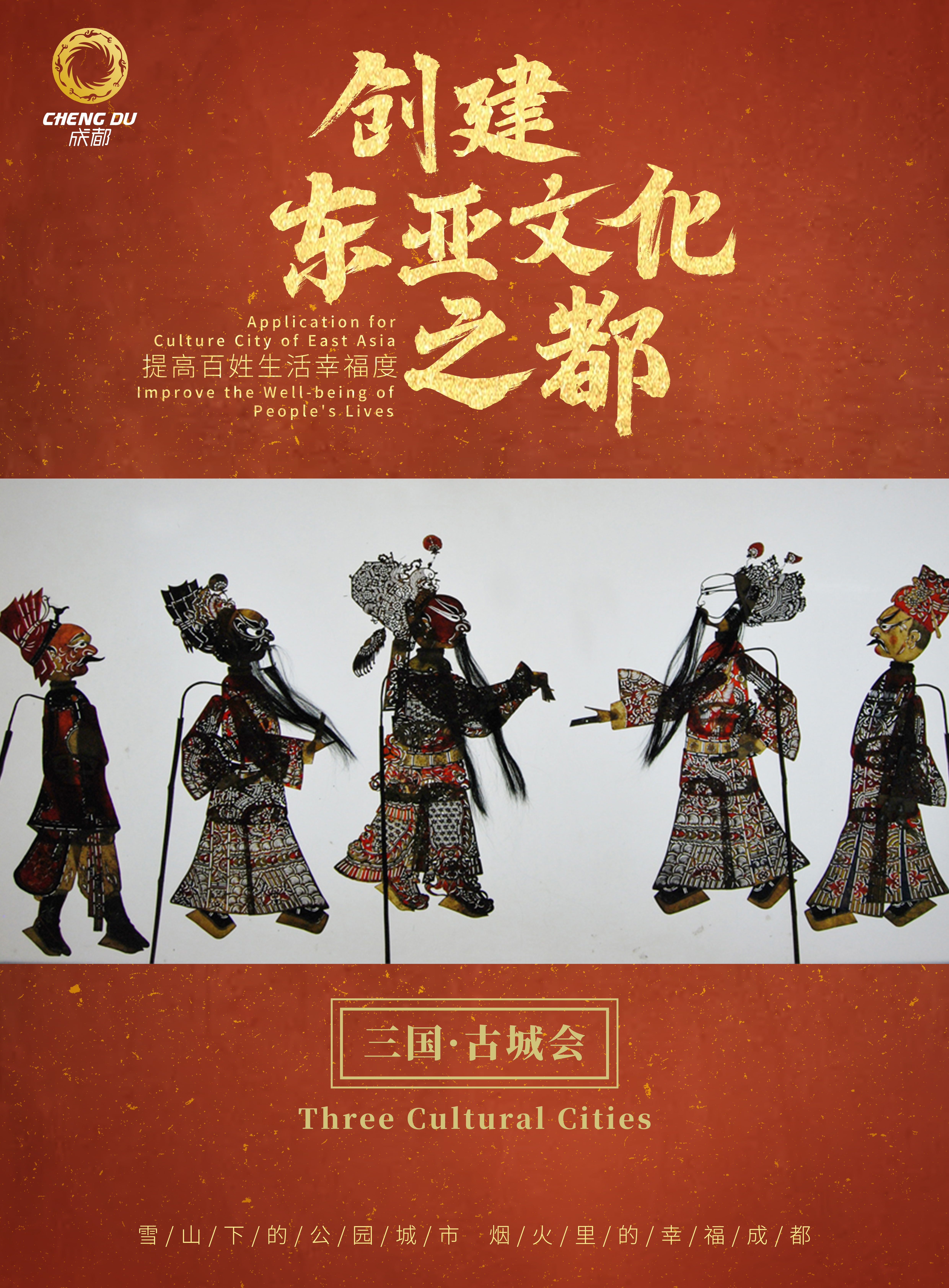
Jinsha Site Museum: Cultivating roots of Chengdu culture
Tianfu culture, or the culture of Chengdu, ranging from the ancient Shu civilisation typified by the Sanxingdui and Jinsha sites, the recurrent tide of immigration in history, to the culture of the modern city of today, has been intermingled with foreign cultures since ancient times.
The Jinsha site, as the place where Chengdu was established as a city, has witnessed the development and prosperity of the city. The Jinsha Site Museum has made full use of the public space by putting up publicity posters and setting up display boards in conspicuous places such as its exhibition halls and tourist information centre, so as to encourage people to concern themselves with the application for Chengdu into the Culture City of East Asia.
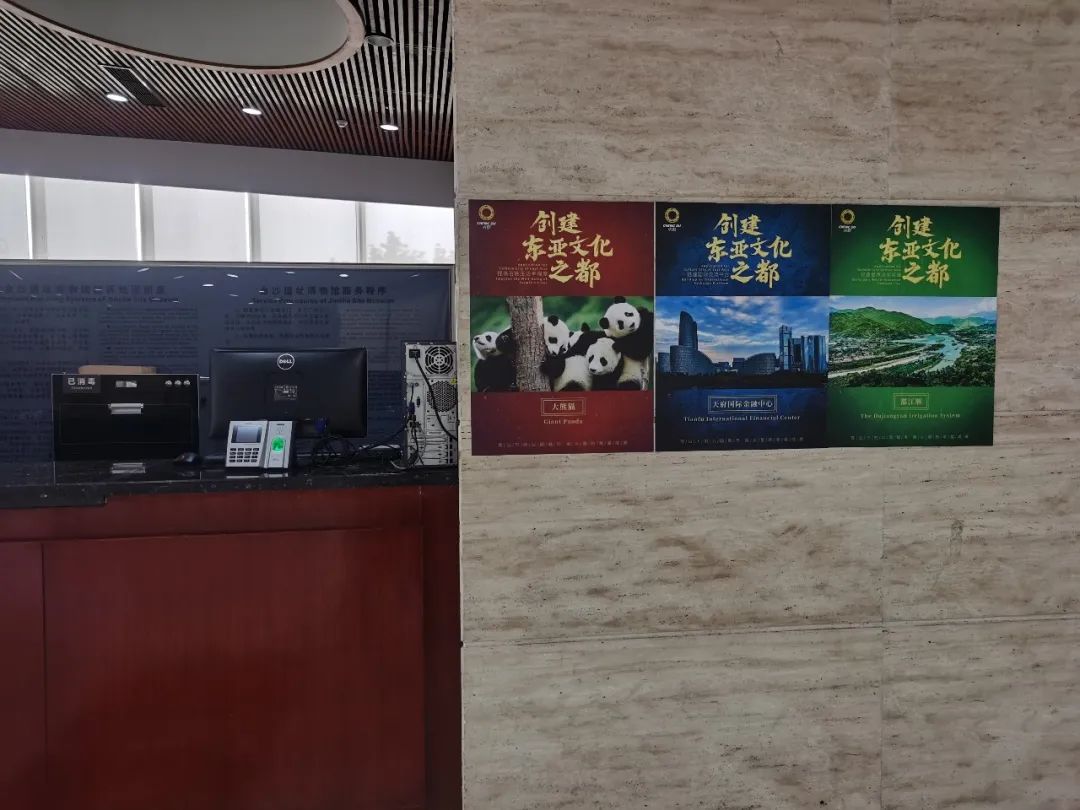
Posters in Jinsha Site Museum
Moreover, posters have been stuck on the bus stops around the Museum, creating a positive atmosphere of the program.
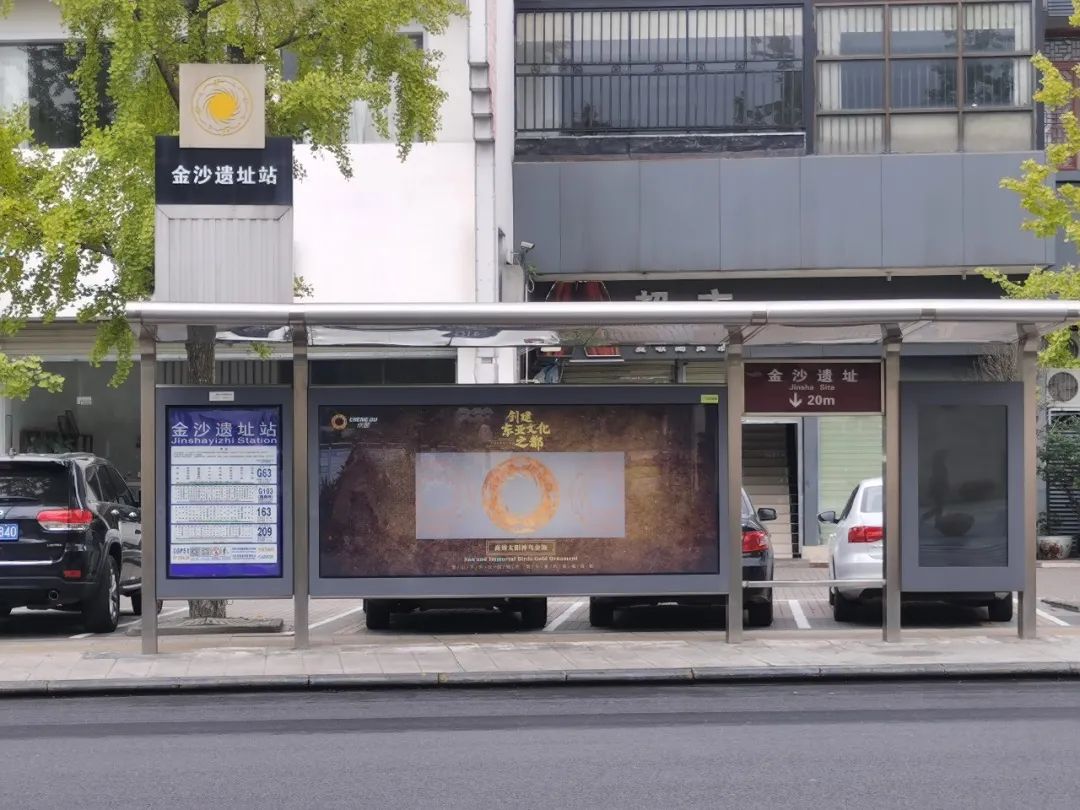
Poster on bus stops around Jinsha Site Museum
Chengdu Museum: Holding diverse exhibitions
Visitors to the Chengdu Museum can easily find publicity materials relating to the Culture City of East Asia on the large LED screen outside the Museum and the electronic screens in the building.
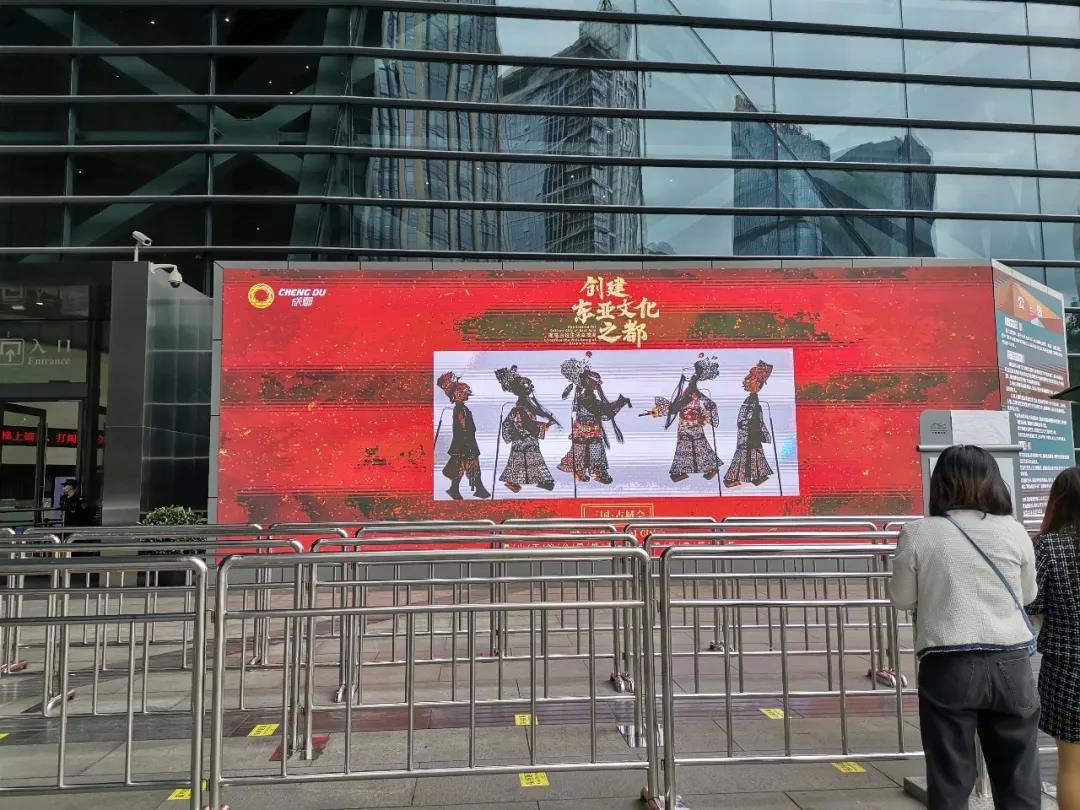
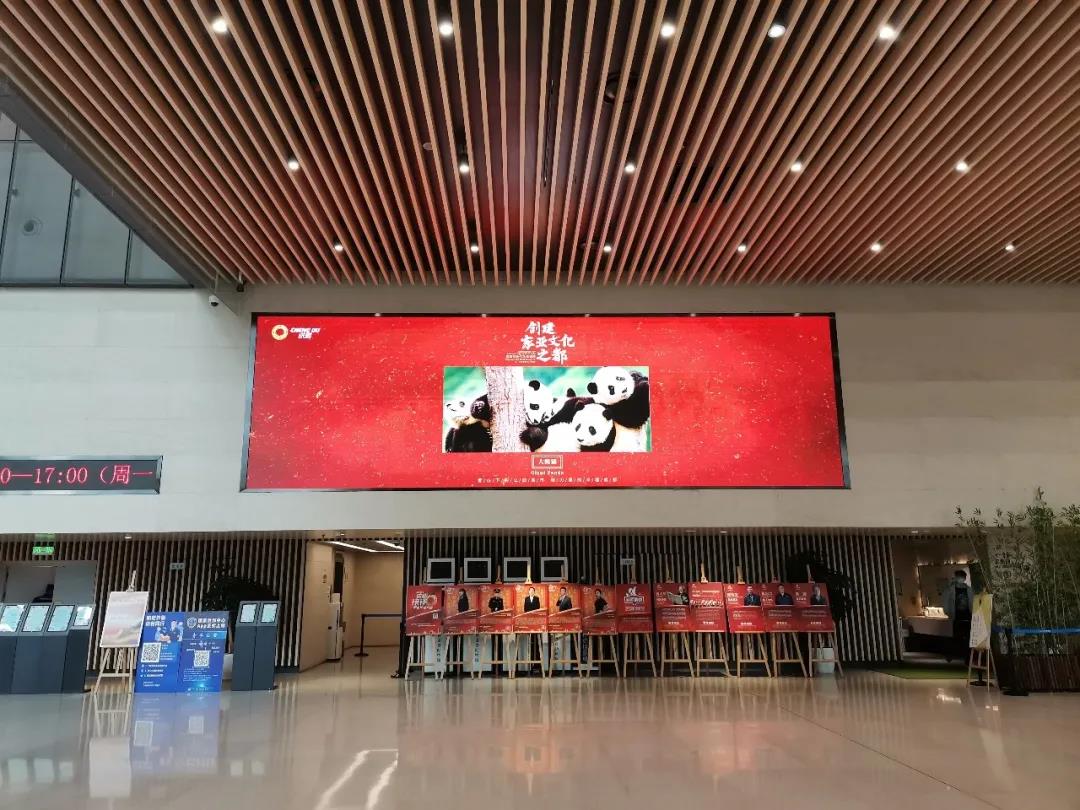
Publicity materials of Culture City of East Asia inside and outside Chengdu Museum
In addition, the Museum, as a major public cultural institution in the city, has been playing an important role in the exchanges and mutual learning between Chinese and foreign civilisations. It signed the Agreement on Academic and Cultural Exchanges with the Kyushu National Museum in Japan in 2015 to develop long-term and in-depth cooperation in fields such as museum operations, activities and exchanges between researchers.
The Museum, together with the Dongguan Exhibition Centre, held a special exhibition named “Flourishing Through Competition - Exhibition of Chinese and Japanese Imari Porcelains in Qing Dynasty” in a temporary exhibition hall in 2020. Themed Sino-Japanese cultural exchange and integration, the exhibition traced the long course of Chinese and Japanese Imari porcelains vying for beauty and fascination, and showed the exchange, innovation and transcendence of culture and technology between the two countries more than 300 years ago. As the first exhibition introduced by the Museum in the post-pandemic era in 2020, it helped to promote cultural exchanges and people-to-people bonds between the countries. Hironobu Fukaura, mayor of Imari, sent a congratulatory letter to the Museum, highly praising it as a spiritual home for the public. The Museum also agreed with the Consulate General of the Republic of Korea in Chengdu on friendly exchanges in 2021. So to speak, it has been contributing to cultural exchanges and cooperation in East Asia and to applying for the Culture City of East Asia.
Chengdu Wuhou Shrine Museum: Relying on Three Kingdoms culture
The Three Kingdoms period (220-280) is a very special and typical era in China, and the Romance of the Three Kingdoms typically reflects the influence of Chinese culture on other East Asian countries including Japan and ROK. As Japanese scholars pointed out, “The Records of the Three Kingdoms is one of the most popular books in Japan.” A Korean scholar also said, “The Romance of the Three Kingdoms is quite well-known in the Republic of Korea like in China.”
The Chengdu Wuhou Shrine Museum, as a classic name card of cultural Chengdu and the most influential museum of the Three Kingdoms relics, has made the best of its internal media resources and external media channels by putting up posters, erecting display stands and carrying out the activity of signature in its areas including the Three Kingdoms Cultural Relics Preservation Zone and in the Jinli Ancient Street. All this is to show its cultural charm, create an environment that promotes the application of the Culture City of East Asia and expand the cultural influence of Chengdu.
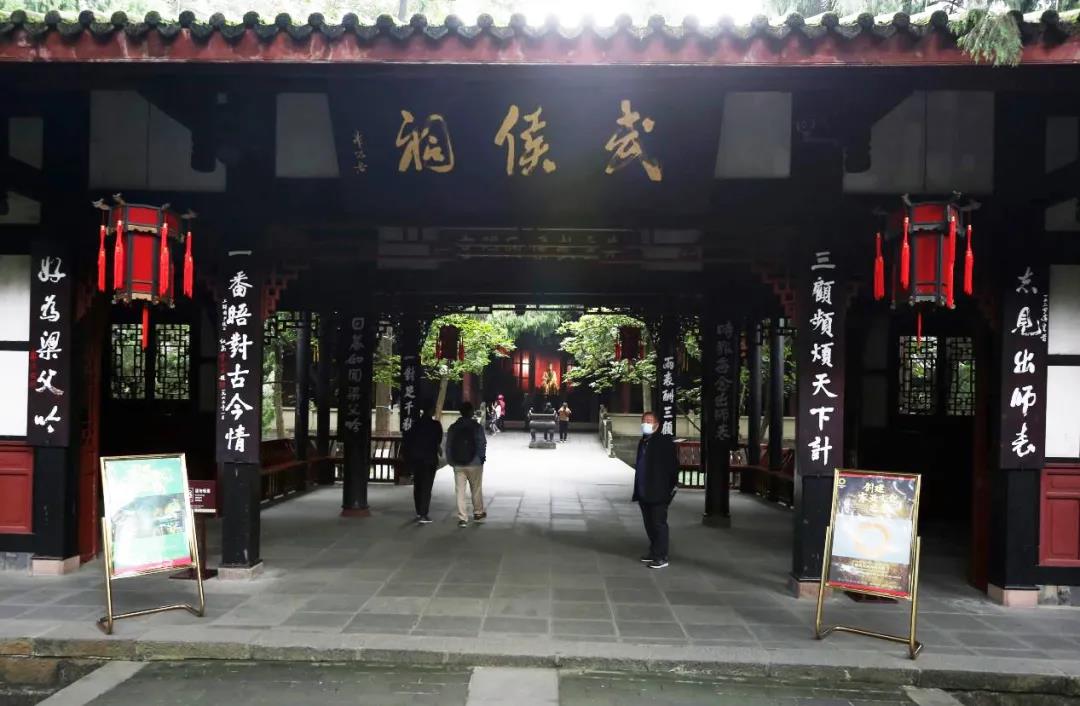
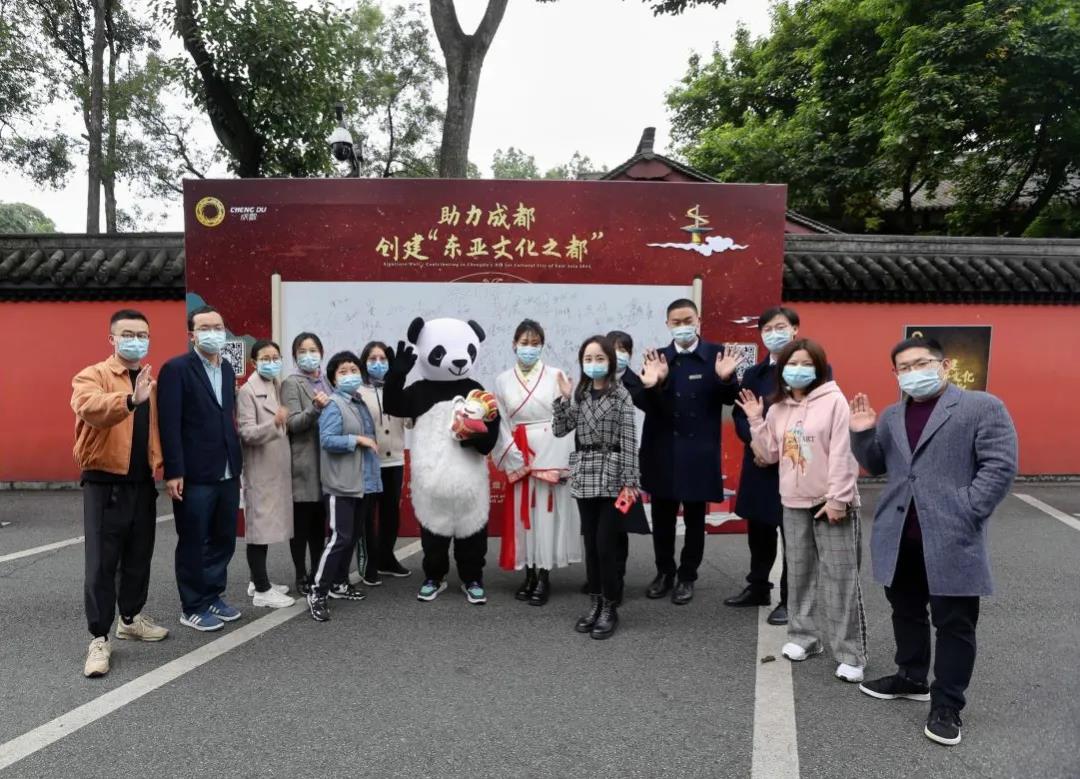
Posters in Chengdu Wuhou Shrine Museum
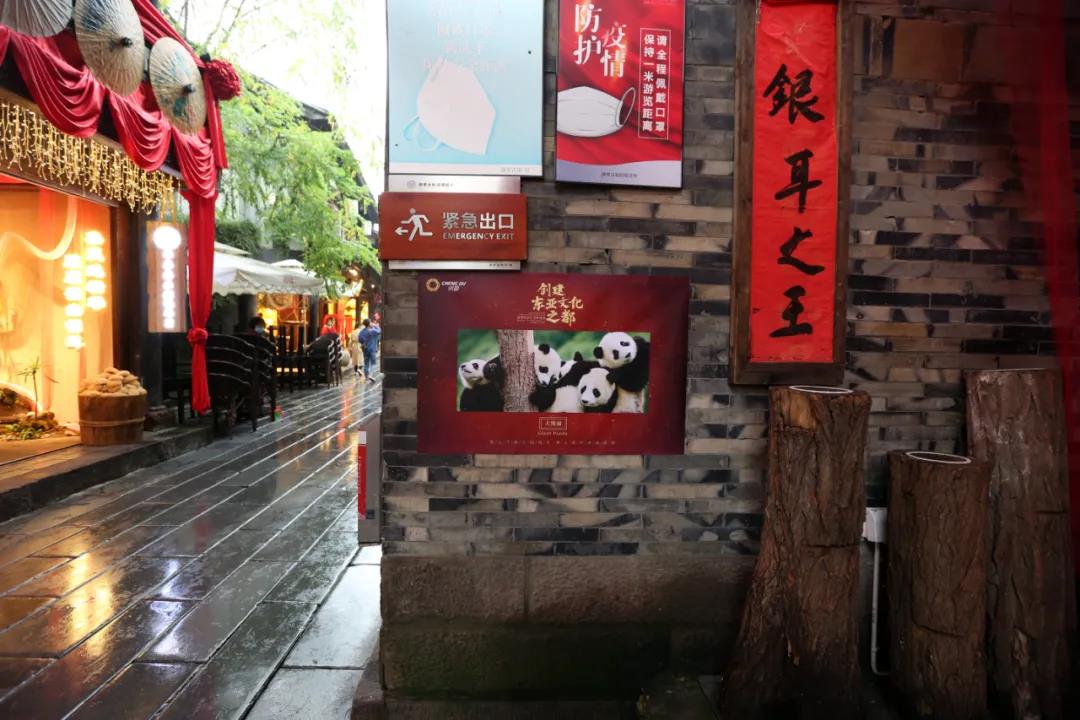
Poster in Jinli Ancient Street
Chengdu Du Fu Thatched Cottage Museum: Promoting spirit of poet sage
Du Fu (712-770), the poet sage of the Tang Dynasty (618-907), enjoys a high reputation all over the world. His poetry, a valuable asset of Chinese literature, has also exerted a broad and far-reaching impact on classic poetry writing in other East Asian countries deeply influenced by Chinese culture.
“Du Fu belongs to China and also belongs to the world. His poetry is an important part and highlight of East Asian culture,” Zhang Zhilie, president of the Sichuan Du Fu Society, said at the opening ceremony of the 11th International Academic Conference of the East Asian Humanities Society held in Daegu, ROK.
Du Fu and his poems have always been popular with the Japanese and Korean people. “As part of his works such as View in Spring are included in Korean textbooks, secondary school graduates all know him,” a professor at Korea University said. Another professor at Kyoto University has also acclaimed Du’s poems as an excellent model to the Japanese. In recent years, multiple-language translation versions of his poems have been published, which reflects the fascination of this great poet and his poetry.
The Chengdu Du Fu Thatched Cottage Museum, as the most poetic cultural card of the city, has made efforts to increase publicity through posters and easel stands, building on people’s anticipation of the program and demonstrating the cultural charm of Chengdu.
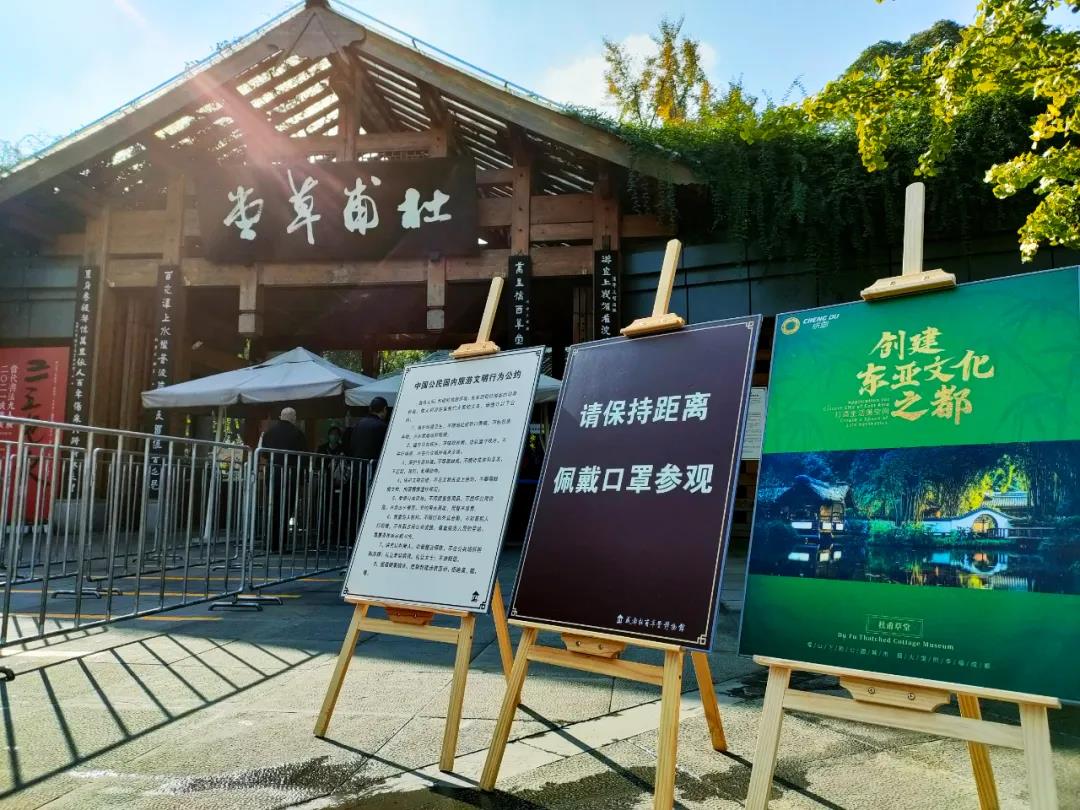
Poster in Chengdu Du Fu Thatched Cottage Museum
Recently, the “Nie Weiping Cup” 2021 China-Japan-ROK Weiqi Masters Tournament was held in the Museum, accompanied by the fragrance of blossoms of osmanthus trees planted by leaders of the three countries. As a bridge for cultural exchanges between China and other East Asian countries, the Museum will continue to promote the spirit of Du Fu and carry forward fine traditional Chinese culture.
Other institutions making contributions
In the Museum of Sui and Tang Dynasties Kiln Sites, posters and display boards have been arranged, and pictures of the city have been shown on digital screens. Volunteers there have spontaneously organised themselves to learn about the application for the Culture City of East Asia. Docents there have tried their best to accompany tourists to appreciate the charm of Chengdu culture with enthusiastic explanations.
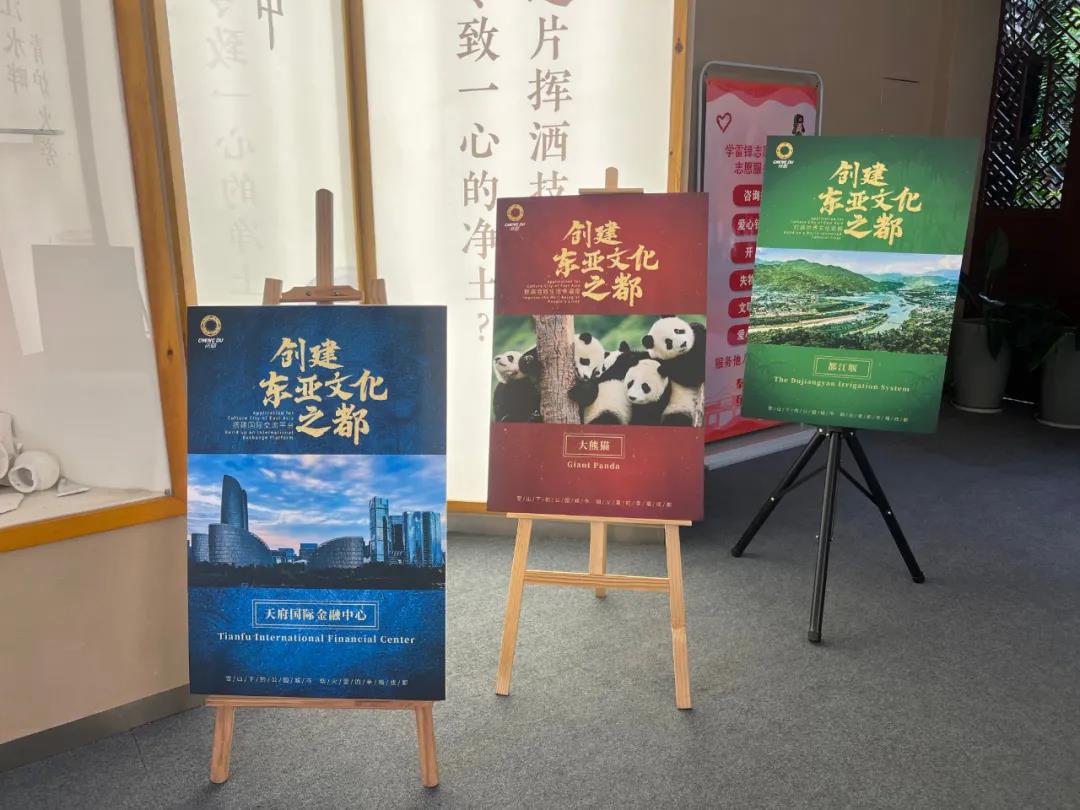
Posters in Museum of Sui and Tang Dynasties Kiln Sites
In the lobby of the Chengdu Public Library, digital screens, display stands, KT boards and posters have been used for the publicity of the program.
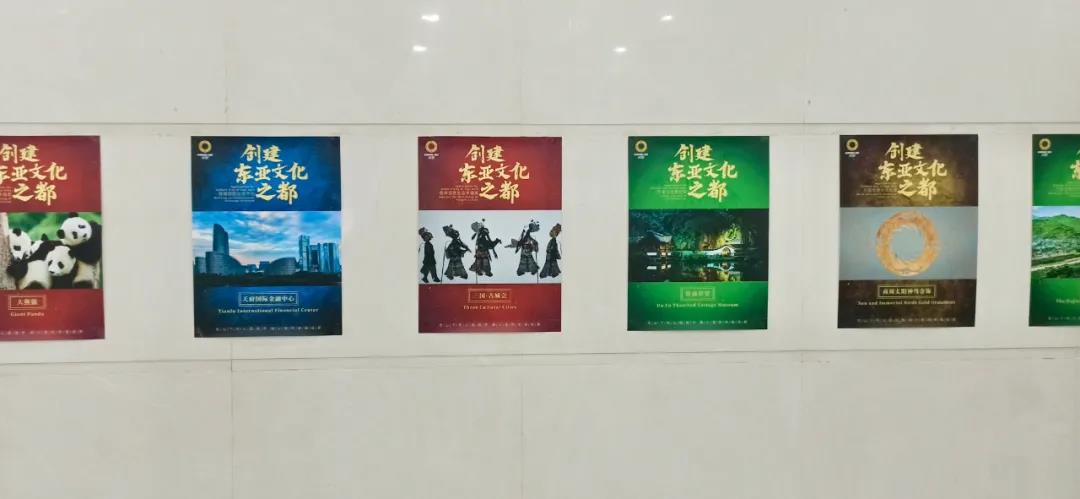
Posters in Chengdu Public Library
In addition, the Chengdu Art Academy has also put up posters, displayed electronic posters and promoted the program on its official WeChat account.
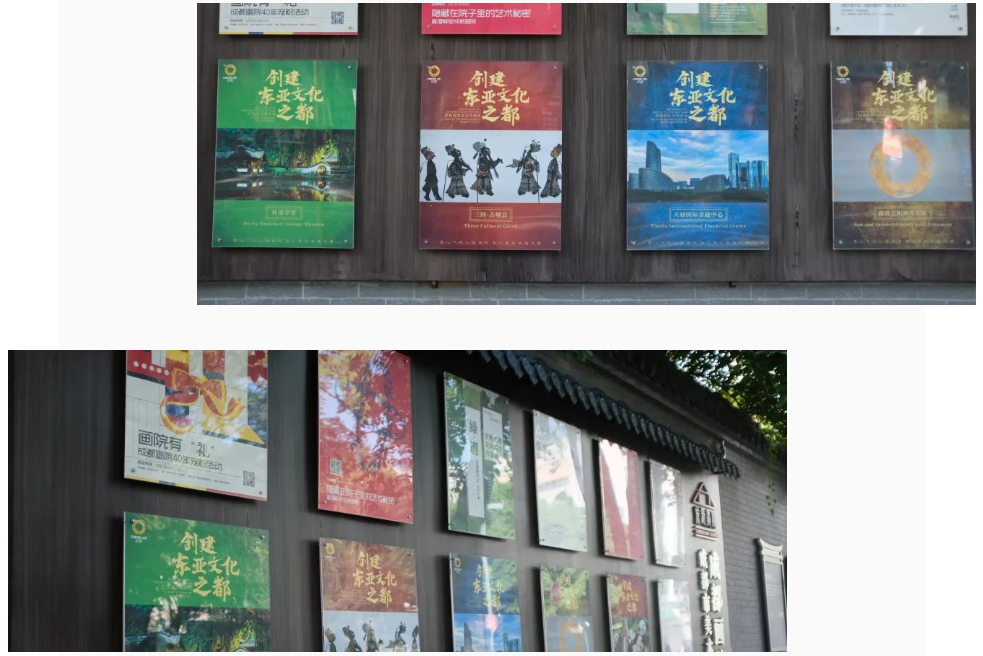
Posters in Chengdu Art Academy